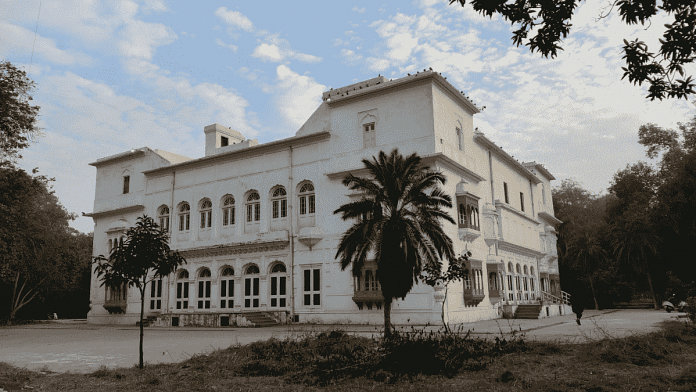Chandigarh: In December 1838 — just a few months before his death — Maharaja Ranjit Singh, the founder of the Sikh Empire, escorted Lord George Auckland, the then governor general of India, from his summer palace to pay obeisance at the Golden Temple.
The Rambagh Palace, built in 1818, was Maharaja Ranjit Singh’s abode in Amritsar when he was at the peak of his power and influence.
Emily Eden, Lord Auckland’s sister who was traveling with her brother at the time, wrote in her journal (later compiled in a book Up The Country) that Maharaja Ranjit Singh was hosting the governor general as an independent king — a position that no other Indian raja held at that time — and as the Maharaja led a procession of his finest elephants, horses and infantry from his palace through a specially-built vista lined with trees to the Golden Temple, it was a proud moment etched on the face of time.
The palace, originally built amid an 80-acre Mughal-style charbagh (four gardens) as Ranjit Singh’s summer retreat, became the “Company Bagh” after the East India Company took over the Sikh Empire in 1849. Noting this, historian P.C. Khanna in his article titled ‘Rambagh, the Splendour it Was’, published in the Journal of Sikh Studies, wrote that the palace doubled up as the Amritsar deputy commissioner’s office and General Dyer even used it as a control room before the Jallianwala Bagh episode of 1919.
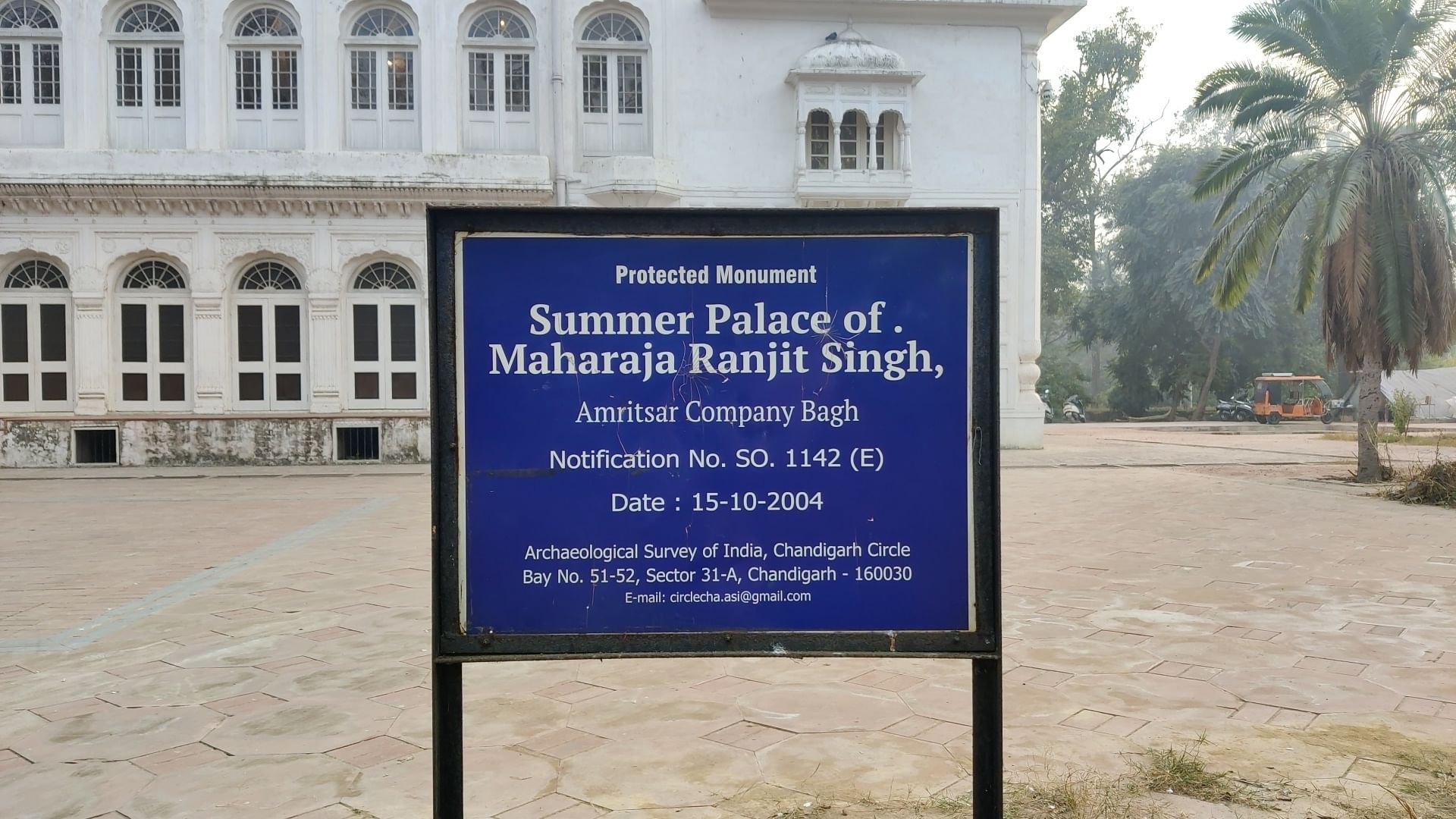
Of the handful of historical buildings that remained on the Indian side of Punjab post partition, the most important, perhaps, is the Rambagh Palace.
In 1997, Punjab government declared the palace complex a protected monument, and, in 2004, the Archaeological Survey of India (ASI) declared it a monument of national importance.
But despite its exalted status, the palace complex is hardly the picturesque early 19th century monument complex reflective of Maharaja Ranjit Singh’s fascinating legacy.
For the past two decades, the palace complex has been the subject of a public interest litigation (PIL) pending in the Punjab and Haryana High Court. Through 800-pages of court records that ThePrint has accessed, we explain how successive state governments — whether the Congress, Shiromani Akali Dal-Bharatiya Janata Party, or the Aam Aadmi Party (AAP) — have been complicit in the ruin of one of Punjab’s most glorious historical sites.
Incongruous hybrid
To a visitor the complex presents an incongruous hybrid of heritage structures jostling for attention with modern-day buildings.
A section of the complex is leased out to three prominent social clubs — the Amritsar Club, the Service Club and the Lumsden Club — the members of which include some of the city’s top businessmen, bureaucrats, professionals and politicians. The complex is dotted with the clubs’ buildings, swimming pools, party lawns, open air theatres, gyms, sports facilities, parking spots, makeshift generator rooms, kitchens and godowns.
The actual palace — once the brightest gem of Amritsar city — however, is a lonely building. It was thrown open to the public in 2018 following a makeover. But with its artefacts having long been moved to the Gobindgarh Fort Museum in the city, the palace today only has a garish collection of fibre mannequins on display.
The garden, trees, and many of the fountains and water channels in the complex have been lost over time, and the few remaining structures are now in a state of disrepair. The grounds are littered with garbage, and cars are now parked on what were once elegant walkways through the garden.
A beautiful entrance gate called the ‘Rambagh Deori’, a panorama dedicated to Maharaja Ranjit Singh built in 2006, a statue of the first Sikh king, and another one of Mahatma Gandhi are the other attractions for a tourist who might stray into the complex.
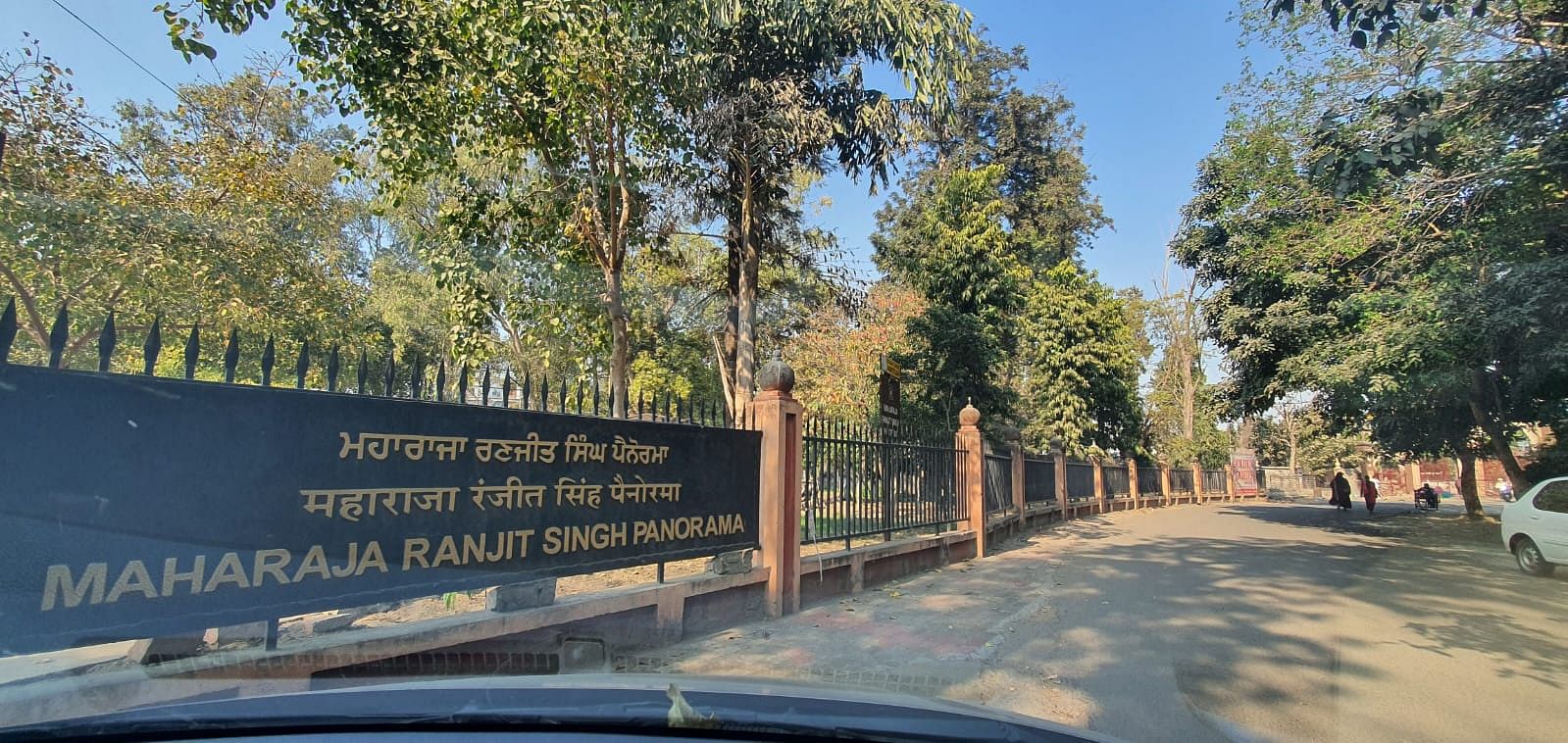
Government apathy
In 2002, a social organisation called Amritsar Vikas Manch filed a Public Interest Litigation (PIL) in the Punjab and Haryana High Court demanding that the three clubs, which have been running on lease since British times, should be evicted and the original glory of the complex as a palace-garden should be restored.
However, as revealed by the court records studied by ThePrint, years of efforts by the HC in asking the state government to move these clubs out to other locations have come to naught.
On 8 December, 2022, while hearing Amritsar Vikas Manch’s PIL, a division bench headed by Chief Justice of the Punjab and Haryana High Court, Ravi Shankar Jha, hearing the PIL noted in its order, “….it appears that the state is hand in glove with the clubs and is proposing to handover the monument in question or the gardens of the monument to the three clubs totally ignoring the fact that the issue of eviction is subjudice and pending before this Court.”
The observation came more than 13 years after a similar observation had been made by a bench headed by then Chief Justice T.S. Thakur who said in his order: “the impression we have gathered from the record and the conduct of the parties (is) that the clubs enjoy the patronage of the official machinery of the state government, for otherwise there is no reason why a protected monument be allowed to continue in possession of three different clubs against the opinion of the ASI, which has taken objection to such clubs being continued in what has been declared as ‘national and protected monument’.”
The court was referring to ASI’s continued objection to the alleged changes that the clubs had made to the palace complex and their continuing to function inside the protected premises.
In a 75-page report it submitted to the HC in December 2022, the ASI said that for years the three clubs and some other private agencies have continued to encroach on more and more areas inside the complex.
In its report — also part of the court documents — the ASI said that the ‘Amritsar Club’ was occupying a heritage building that it suspects has been defaced from the inside, and that another heritage building — a deorhi — which had been occupied by the Service Club, was surrendered to the ASI in February 2022 and was found similarly damaged.
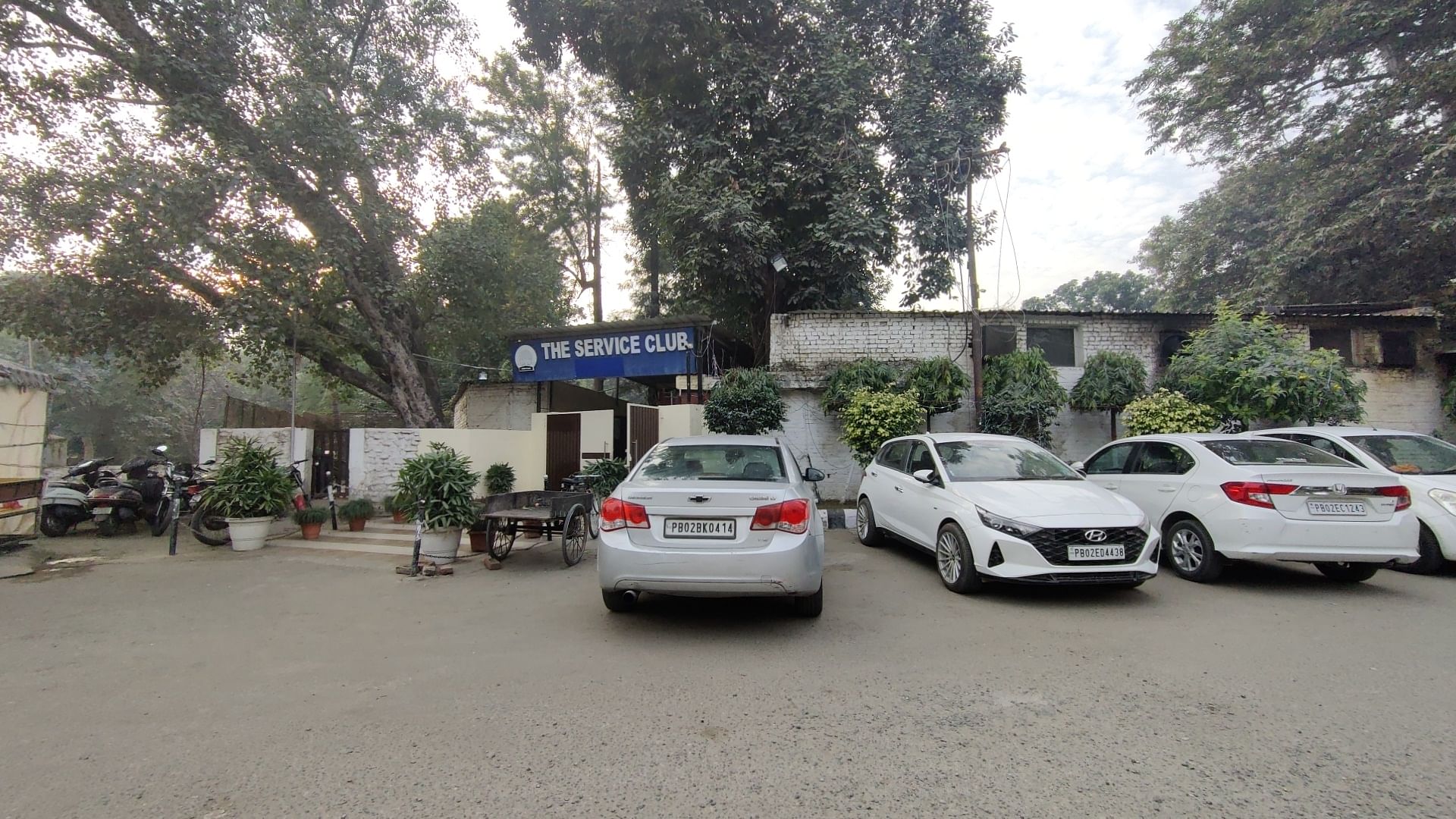
The Lumsden Club, too, had undertaken widespread illegal construction, the ASI noted.
All three clubs, the report added, had built structures within the protected complex, adding that while multiple complaints had been made to the Punjab Police against the clubs no action was taken against them.
Records also show that, on their part, the clubs are vehemently opposed to being removed from the palace complex. They claimed to be an integral part of the palace, saying they had existed since British times, that for over 6,000 club members and their families, these were “second homes”, and that they were as much a part of Amritsar’s cultural heritage as any other historical institution.
In addition, the clubs argued that they had also helped maintain the palace and that without them, it would be “infested with untoward elements and drug addicts”.
Also Read: Bathinda Fort saw 1,600 years of Sultanate, Sikh history. ASI struggling to hold it together
Governments patronised clubs
In 2006, following specific directions of a division bench headed by Justice J.S. Khehar, the Municipal Corporation Amritsar had filed a case before the Sub Divisional Magistrate (SDM) Amritsar for the three clubs to be removed from the palace premises.
In October 2006, while litigation over the clubs were ongoing in both the high court and at the SDM level, the then chief minister Captain Amarinder Singh, through verbal orders to the mayor of the municipal corporation, Amritsar, asked him to extend the lease of these clubs for another 30 years, show court records. The lease of the clubs with the Punjab government had ended in the early 1990s and had not been renewed since. However, the then municipal commissioner refused to accede to the mayor’s orders.
In November 2013, a division bench of the high court headed by Justice Sanjay Kishan Kaul asked the government to find a “legally feasible solution” to the long-pending issue.
The very next month, the SAD-BJP government under the then chief minister Parkash Singh Badal, in order to facilitate the running of these clubs in perpetuity, moved to “deprotect” the entire complex except for the area in which the palace building stood.
In 2015, the ASI turned down the move, but this didn’t stop Anil Joshi, then local bodies minister and MLA from Amritsar North constituency, from inaugurating a basketball court in the “protected” complex the same year.
Sidhu to the rescue
According to the records, on 4 September, 2018, the Punjab and Haryana HC gave the then Amarinder Singh Congress government 15 days to decide on the clubs’ eviction.
On 1 October, Amarinder’s local bodies minister Navjot Singh Sidhu chaired a meeting of his department with the office bearers of the three clubs and unequivocally shot down any proposal to evict the clubs, instead ordering his team to explore other options.
The “other option” came in the form of a Memorandum of Understanding (MoU) to be signed between the Amritsar Municipal Corporation and the ASI that would lay down the terms and conditions for the upkeep and maintenance of the Rambagh complex.
While drafting the MoU, the Amritsar Municipal Corporation also added a clause that said the three clubs would continue to run from the palace complex.
Between October and December 2018, the Punjab Government forwarded this draft MoU several times to ASI for approval.
The clubs, after a meeting with Punjab BJP leader Shwait Malik, wrote to Union Minister for Culture and Tourism Mahesh Sharma on 24 November, urging him to intervene with the ASI to have the draft of the MoU approved.
The ASI, however, refused to budge and instead drafted their own version of the MoU, which said that the three clubs would be removed from the complex in a phased manner within 5 years.
This version of the MoU, signed on 4 December, 2018, between the Punjab government and the ASI, was placed before the high court.
Instead of honouring this MoU and beginning the process of shifting the clubs out of the complex in a phased manner, Amarinder Singh government, on the contrary, began convincing the ASI to delete the clauses related to the eviction of the clubs.
The clubs, too, moved multiple representations to the Punjab government and the Union cultural affairs minister seeking deletion of the eviction clause.
On 4 October, 2019, the Amritsar Municipal Corporation forwarded the club’s representation to the ASI “for making the necessary alterations”, adding that the changes should be made well before the next date of hearing in the court.
However, despite these tries, ASI held its ground.
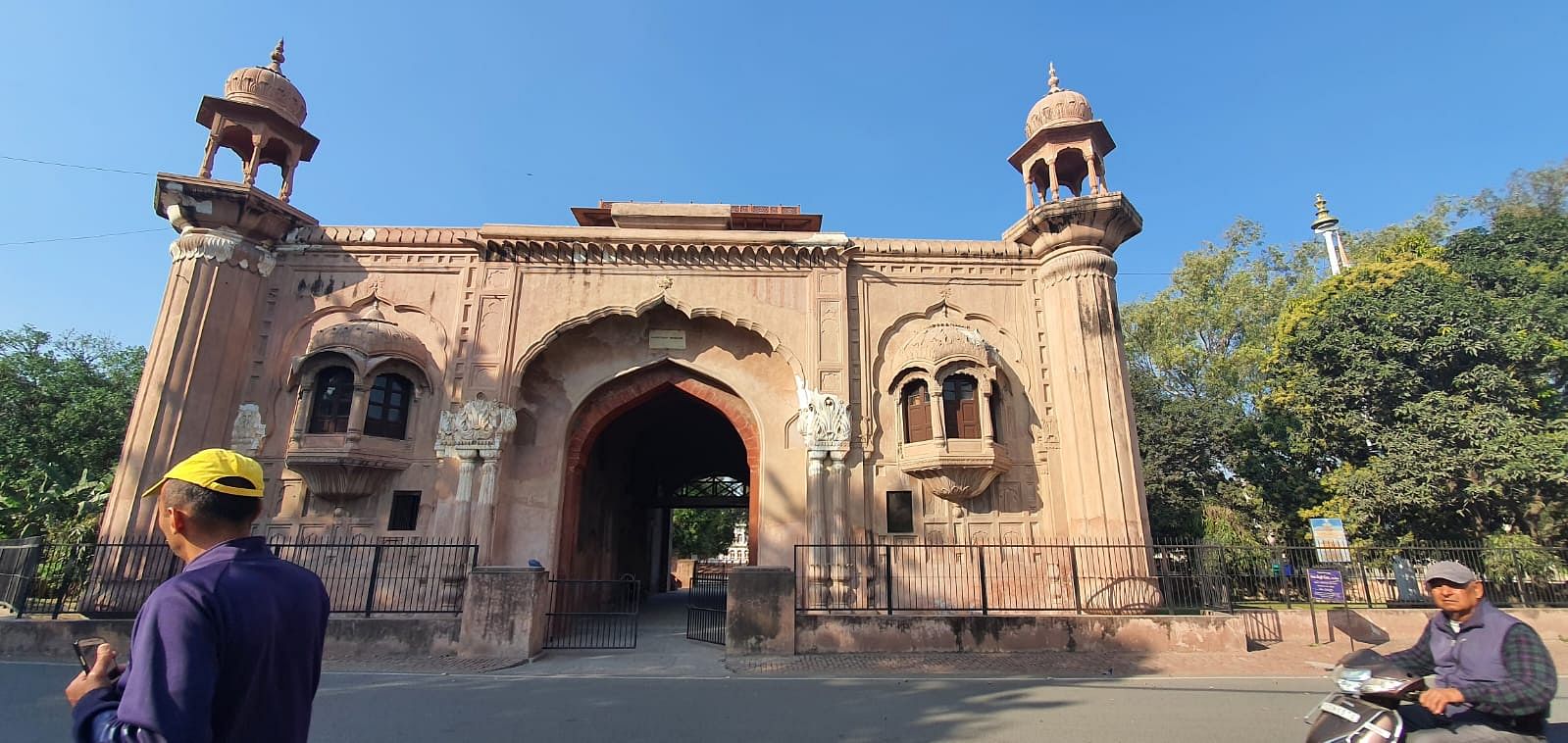
New government, fresh attempt
On 6 April, 2022 — less than a month after the AAP government under Chief Minister Bhagwant Mann swept to power in Punjab — the Amritsar municipal corporation made yet another attempt to get the 2018 MoU modified, records showed.
In a detailed letter to the state’s revenue department — which owns the land that the palace complex stands on — the civic body asked for its intervention to get the controversial clauses deleted.
The revenue department complied and in November 2022, it called a meeting with the ASI in yet another unsuccessful attempt to get the MoU changed.
The repeated push to get the MoU altered drew the high court’s ire — on 8 December, the division bench headed by Chief Justice Jha observed that it appears that the parties “have now proposed to grant permanent lease and occupation to the clubs in question”.
The court further said: “It is, however, made clear that the State, the Corporation and the clubs would be at liberty to enter into a settlement, if so advised, only in respect of relocation of the clubs in question at alternative sites which the State is willing to provide”.
The bench also directed the ASI not to succumb to any demand of modification of the MoU. “The Department of Archaeological Survey of India would be at liberty only to reject the modification in MoU, if it finds the same to be in contravention of the provisions of law”.
The case will once again come up for hearing in July.
(Edited by Zinnia Ray Chaudhuri)
Also Read: Four reasons the Sikhs are hurting. And it’s not about the K-word


